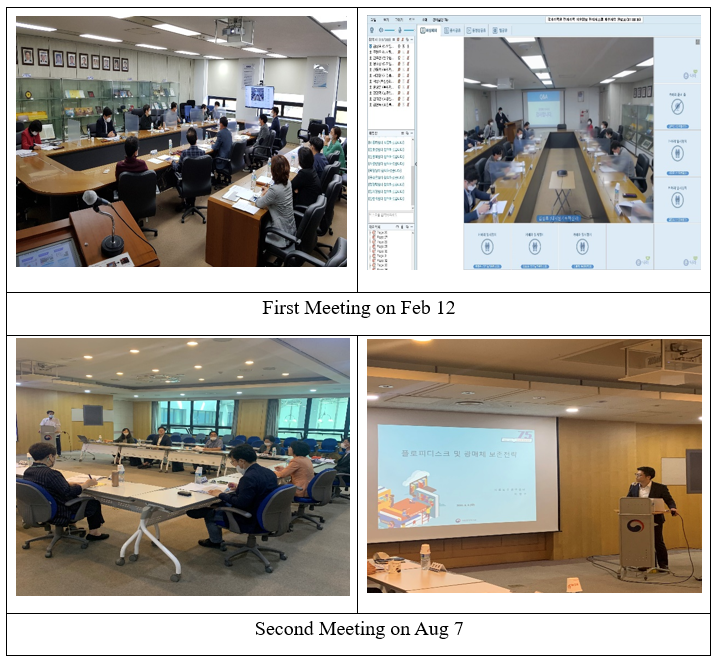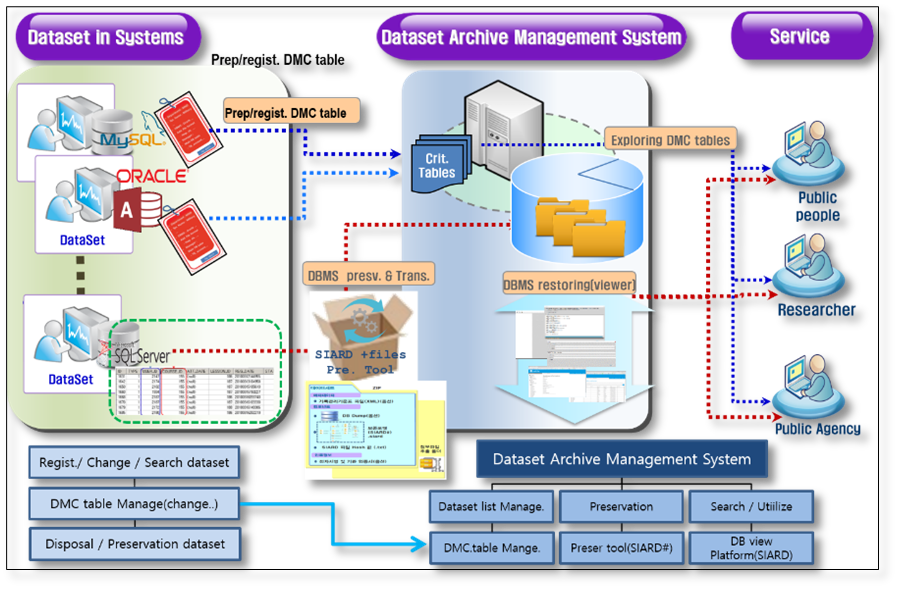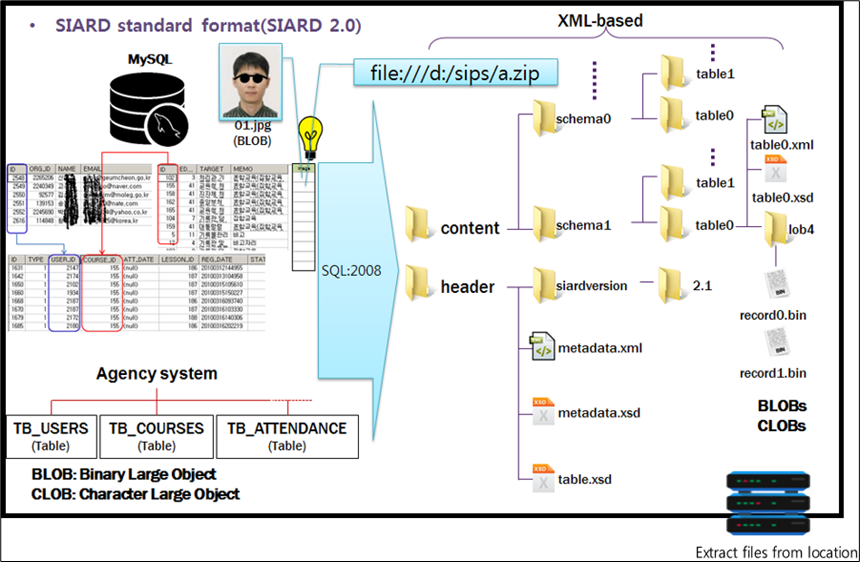National Archives of Korea(NAK) is a central archive affiliated to the Ministry of the Interior and Safety that systematically collects and preserves major records, provides archival information to the public and carries out various activities so as to promote an archival culture. NAK opened its doors in 1969 and it has since been growing and developing steadily at the central records and archives management organization in charge of national records management. At the present, it has several branch offices in various regions, including the Government Complex in Daejeon, National Archives, Seoul, National Archives, Daejeon, National Archives, Busan and Presidential Archives.
There had been growing interests on the digital preservation among collecting institutions in Korea for some time. Each institution had only dealt with it’s own challenges so far, however, rather than creating a collaboration mechanism. It was noteworthy that three collecting institutions met for the first time, on February 12 to pave a road to cooperate: National Archives of Korea(NAK), National Library of Korea(NLK), and the Korea Institute of Science and Technology Information(KISTI). They agreed on the need of a Korean version of Digital Preservation Coalition then.
In a couple of subsequent meetings, each participating institutions had chances to briefly share their past and current activities related to digital preservation: NLK performed various digital material preservation and digital service of online materials, KISTI conducted various research on digital preservation and NAK developed a digital format registry. They also discussed for cooperation agenda and agreed to organize joint seminars and regular meetings.
NLK and KISTI demonstrated keen interests in utilizing the DFR(Digital Format Registry), developed by NAK. It is a digital service for providing sustainable representation ability and ensuring effective preservation strategy. It also provides with risk assessment mechanisms of and collects technical information of file formats(e.g., file name extension, version, operating software, etc.). DFR collects most of the needed information from PRONOM and adds the information of domestic file formats also. While this service only serves for NAK’s purpose at the moment, it will be gradually extended to potential service users such as NLK and KISTI. The two organizations are expected to participate in the process.

Paving the Unknown Path : Managing Dataset Records
There are approximately 16,000 information systems currently in use by the public institutions in Korea. Most of them are used to create dataset records on daily basis. It is likely that some of the systems containing precious records have been already gone as the system gets upgraded. As each system must have its own peculiarities, it is not likely there are one-size-fits-all methodology of managing and preserving dataset records. The National Archives of Korea(NAK) launched, therefore, a four-year project. Various professionals of NAK, including archivists, records managers, engineers, and librarians, work together to design the project.

Each year, selected systems are analyzed in order to identify related business transactions and to appraise the value of dataset records created. During the analysis, stakeholders of each system are also identified, such as those responsible for the transactions, system managers, records managers and so on. The analysis results in a primitive governance structure for each system. First two years(2019-2020) of the project allowed NAK to review a total number of 80 systems. NAK also developed SIARD_KR, a tool for extractig and transferring dataset records from records systems to archives system. Greatly indebted to Swiss Federal Archive’s SIARD Suite, it is extended to accommodate large-sized systems, to extract data tables and attached files, and to be applied to domestic DBMS(CUBRID).

Detecting and Reviving Damaged Files
Since 2015, the National Archives of Korea(NAK) has ingested digital records from government agencies. NAK collects records of enduring values, which are sentenced to be preserved for over 30 years. As they are transferred to NAK ten years after creation, some of them are found damaged and unable to be represented by the time NAK is able to inspect them.
Via human eye inspection, NAK identified damaged files and categorized damage patterns. It also conducted research for reviving damaged files by rectifying structural information. Tools for mechanical inspection are also in progress
